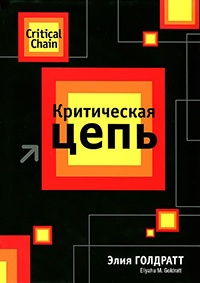Читать книгу "Критическая масса. Как одни явления порождают другие - Филип Болл"
Шрифт:
Интервал:
Закладка:
5 Heilbroner, p. 176.
6 J.M. Keynes (1926). «Francis Ysidro Edgeworth,» In Essays in Biography; p. 224. W. W. Norton, New York, 1963.
7 P.Krugman (1994). Peddling Prosperity, p. xi. W.W. Norton, New York.
8 Heilbroner, p. 317.
9 D.Howell (2000). The Edge of Now. Macmillan, London.
10 J. J Kay (2000). «Economic with the truth.» Prospect, October, p. 70.
11 J M.Keynes (1936). The General Theory of Employment, Interest and Money, p. 161. Macmillan, London, 1973.
12 G.Soros (1994). Quoted in the editorial introduction to The Economy as a Complex Evolving System II, ed. W.B. Arthur, S.N. Durlauf & D.A. Lane, p. 15. Addison-Wesley, Reading, Mass.
13 Kay, p. 70.
14 AKirman (1996). «Some observations on interactions in economicsi». Paper presented at Workshop on Structural Change, Manchester Metropolitan University, U. K., May 20-21,1996.
15 Ibid.
16 Arthur, Durlauf & Lane, p. 9.
17 C.Davenant (1696). «An Essay on the East-India-Trade,» p. 25. London.
18 A.Smith (1759). The Theory of Moral Sentiments, p. 82. Ed. D.D. Raphael & A.L. Macfie. Clarendon Press, Oxford, 1976.
19 E.Burke (1797). Letter to Arthur Young, 23 May. In The Worb and Correspondence of the Right Honourable Edmund Burke, vol. II, p. 398. Francis & John Rivington, London, 1852.
20 Y.Louzoun, S.Solomon, J.Goldenberg & D.Mazursky (2002). «The risk at being unfair: world-size global markets lead to economic instability.» Preprint.
21 J M. Epstein & R. Axtell (1996). Growing Artificial Societies, p. 136. MIT Press, Cambridge, Mass.480.
ЭПИГРАФЫ
George Kingsley Zipf (1949). Human Behavior and the Principle of Least Effort, p.27, Hafner, New York, 1965.
Herbert Simon (1996). The Sciences of the Artificial, 3rd ed., p. 2. MIT Press, Cambridge, Mass.
Philip Anderson (1997). In The Economy as a Complex Evolving System II, ed. W. В Artb S.N. Purlauf & D.A. Lane, p. 566. Addison-Wesley, Reading, Mass.
1 L.Laloux, M.Potters, R.Cont, J.-P. Aguilar & J.-P. Bouchard (1999). «Are financial crashes predictable?» Europhysics Letters 45, 1-5.
2 P.Bak (1997). How Nature Works, pp. 187-88. Oxford University Press.
3 Ibid., p. 191.
4 ATennyson (1842). «Locksley Hall,» p. 20, line 137, in Locksley Hall and Other Poems. Ernest Nister, London.
5 B.Mandelbrot (1983). The Fractal Geometry of Nature. Freeman & Co., New York.
6 E.Wolf (1996). «Trends in household wealth during 1989-1992.» Submitted’to the Department of Labor, New York. And J.Diaz-Gimenez, V.Quadrini & J.V. Rios-Rull (1997). «Dimensions of inequality: facts on the U.S. distributions of earnings, income and wealth.» Quarterly Review of the Federal Reserve Bank of Minneapolis 21,3-21.
7 C.Snyder (1940). Capitalism the Creator; p. 417. Macmillan, New York.
8 Z.-F. Huang & S.Solomon (2001). «Finite market size as a source of extreme wealth inequality and market instability.» Physica A 294, 503-13.
9 Zipf, p. 543.
10 Ibid., p. 544.
ЭПИГРАФЫ
Charles Handy (1993). Understanding Organizations, 4th ed., p. 313. Penguin, London.
John Burton Sanderson Haldane (1949). «Shapes and weights.» In What Is Life? p. 186. Alcuin Press, Welwyn Garden City, England.
E.Fritz Schumacher (1974). Small Is Beautiful, p. 55. Sphere, London.
1 Quoted in G.Monbiot (2000). Captive State, pp. 166-67. Macmillan, London.
2 A Review of Monopolies and Mergers Policy: A consultative document. Cmnd 7198, pp. 136-7. HMSO, London, 1978.
3 A. Smith (1776). An Inquiry into the Nature and Causes of the Wealth of Nations. Abridged version, ed. L.Dickey (1993), p. 5. Hackett, Indianapolis.
4 Monbiot, p. 179.
5 R.Axtell (2001). «Zipf distribution of U.S. firm sizes.» Science 293,1818-1820.
6 J.Sutton (1997). «Gib rat’s legacy.» Journal of Economic Literature XXXV, pp. 42-43.
7 R. Axtell (1999). «The emergence of firms in a population of agents: local increasing returns, unstable Nash equilibria, and power law size distributions.» Center on Social and Economic Dynamics, Working Paper no. 3, p. 3. Brookings Institution, Washington, D. C.
8 Sutton, p. 57.
9 J.Kay (2003). «The real economy.» Prospect, May, p. 28.
10 Axtell (1999), p. 87.
ЭПИГРАФЫ
John Stuart Mill (1843). A System of Logic, pp. 572-73. Longmans, Green & Co., London, 1884.
Eric Hobsbawm (1994). Age of Extremes, p. 147. Abacus, London.
L.N. Tolstoy (1869). War and Peace, trans. R.Edmunds, vol. 2, p. 1426. Penguin, Harmondsworth, 1969.
1 Thucydides, History of the Peloponnesian War, trans. B.Jowett, 2nd ed., book III. para.
11, Oxford University Press, London, 1900.
2 R.Axelrod & D.S. Bennett (1993). «А landscape theory of aggregation.» British Journal of Political Science 23, 211-33, here p. 219.
3 K. Waltz (1979). Theory of International Politics, p. 167. Addison-Wesley, Reading, I Mass.
4 G.H. Snyder (1984). «The security dilemma in alliance politics,» World Politics 36, 461-95.
5 Hobsbawm, p. 162.
6 M.Oakeshott (1933). Experience and Its Modes, p. 128. Cambridge University Press.
7 Quoted in N. Ferguson (1997). Virtual History, p. 1. Picador, London.
8 H.Trevor-Roper (1981). «History and imagination.» In History and Imagination: Eassays in Honour of H.R. Trevor-Roper, p. 364, ed. V.Pearl, B. Worden & H.Lloyi- Jones. Duckworth, London.
9 J Ferguson, p. 85.
10 Ibid.
ЭПИГРАФЫ
Karl Mannheim (1936). Ideology and Utopia. Harcourt, Brace, New York. Quoted in Biernstedt (1959). The Making of Society, p. 505.
Внимание!
Сайт сохраняет куки вашего браузера. Вы сможете в любой момент сделать закладку и продолжить прочтение книги «Критическая масса. Как одни явления порождают другие - Филип Болл», после закрытия браузера.




